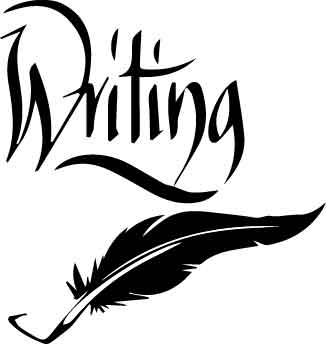Editorial: The state of college writing
Writing is an essential 21st-Century tool for universities.

Elizabeth Kaiser graphic.
It can be easy, particularly in the context of a STEM-heavy university, to dismiss the importance of writing. The “STEM shortage” has re-oriented the focus of higher education, resulting in drastic curricular changes at universities across the nation. With the increasingly standardized K-12 curriculum, it has become more difficult to devote time to writing instruction.
The result of this is negative attitudes towards writing–and I don’t blame students for that. The five-paragraph essay is completely inadequate at best, and at worst, it trains students to write in restrictive, and often torturous, ways. I often get students who “hate writing”, and I can hear the years of outlines, brainstorming and transition phrases swimming through their heads.
Email. Twitter. Text. Students are writing more and more, but it just looks different than what they’re taught. They’re even combining text and visuals on a daily basis; Instagram stories are an excellent example of this.
Writing is a highly marketable and valuable skill. Both the mechanical and electrical engineering programs expect students to develop the “ability to communicate effectively” as part of their Student Outcomes. Writing is a key part of communication, and should not be overlooked.
With the Exponent, we rely on a multitude of software and platforms in order to both publish the paper and engage with our readers. InDesign, Lightroom, Facebook and Twitter are all parts of the machine that is our beloved newspaper, and by using these tools, our students learn to engage critically with this multimodal writing in a way that will prepare them for their future careers.
I would argue that writing is equally as important for students across campus. The act of writing teaches us to engage with our subject, envision our audience and context and respond appropriately. Writing is more than just proofreading and editing: it’s connecting and messaging.
The next time you think of writing as a chore, look at your phone. Check your email outbox. Read your texts, tweets and posts. Chances are, you’ve been doing a lot of writing this whole time.



